This week, we fleshed out our design, refining our character and brainstorming a few possible directions based on technical limitations that we discovered. We also prepared for 1/4s.
New Character
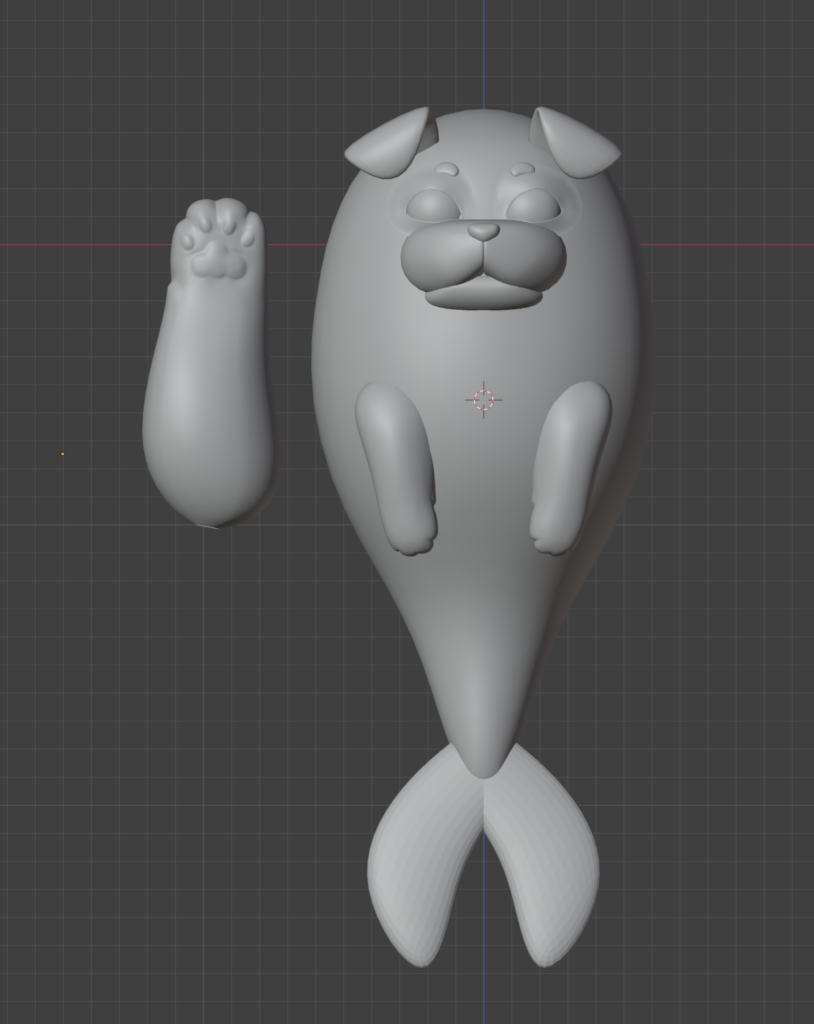
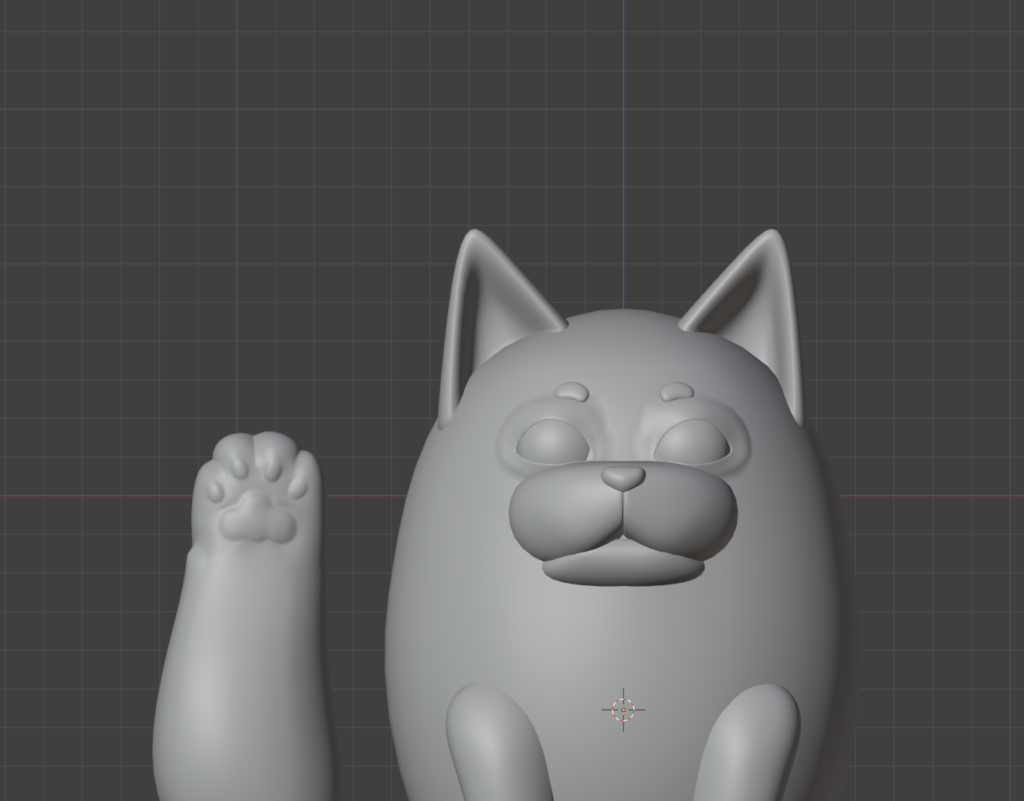
Joy’s current character model mixes cats, dogs, and seals. The goal is to create a cute and cuddly creature that is distinct but not completely alienoid. Moreover, the seal body will avoid some of the technical challenges of quadripeds, making it look more natural when it floats in AR space.
Design Directions
The core of Jerry’s experience design is what we call secondary attention. Secondary attention is having the pet present in the background while the user is primarily engaged in a different activity on a separate app. This way, we aim to simulate the feeling of a real pet that accompanies you while you’re working or watching a movie.
On the Apple Vision Pro, users can have multiple apps open in 3D volumes over their mixed reality surroundings. We plan for our pet to be in what in Unity is called a bounded volume, a finite box-shaped space that the user can move around and transform.
Design Limitations
However, due to privacy reasons, apps on the Apple Vision Pro can’t access the spatial anchor data of other apps running in the background. This makes it difficult to have our virtual pet overlay properly onto our physical pet when it is in the background.
There are two solutions for this: 1) Either forgo the secondary attention route and have the pet be a standalone app (fully immersive, primary attention) so that the overlay always works, or 2) Design around the lack of a proper overlay, making narrative decisions to justify the separation of the physical and virtual pet and maintain secondary attention.
We decided that secondary attention is crucial to our experience, so we opted for 2).
Plans going forward
To implement solution 2), Jerry came up with the three plans below. The one we choose depends on what is possible technically and on the quality of the user experience.
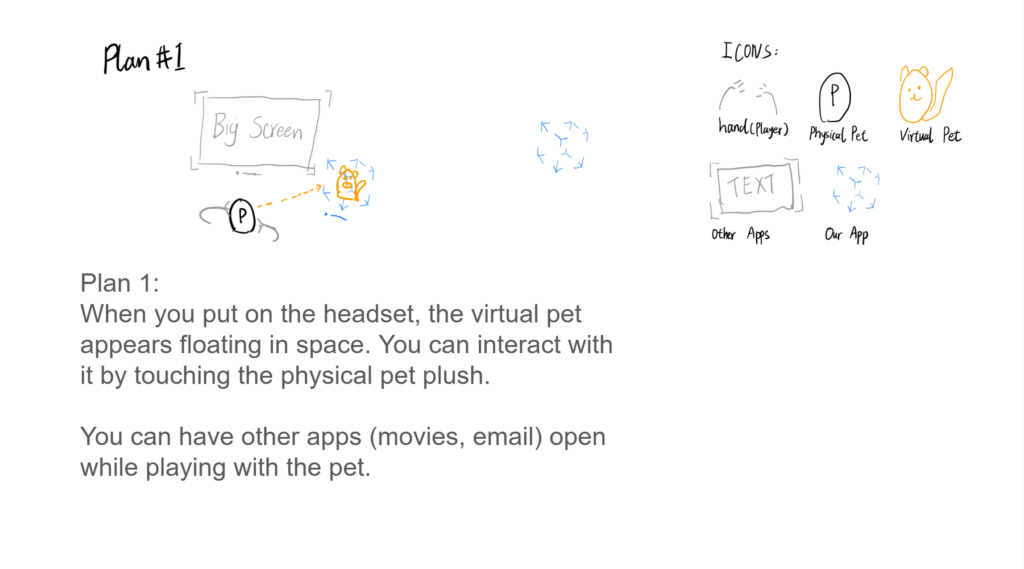
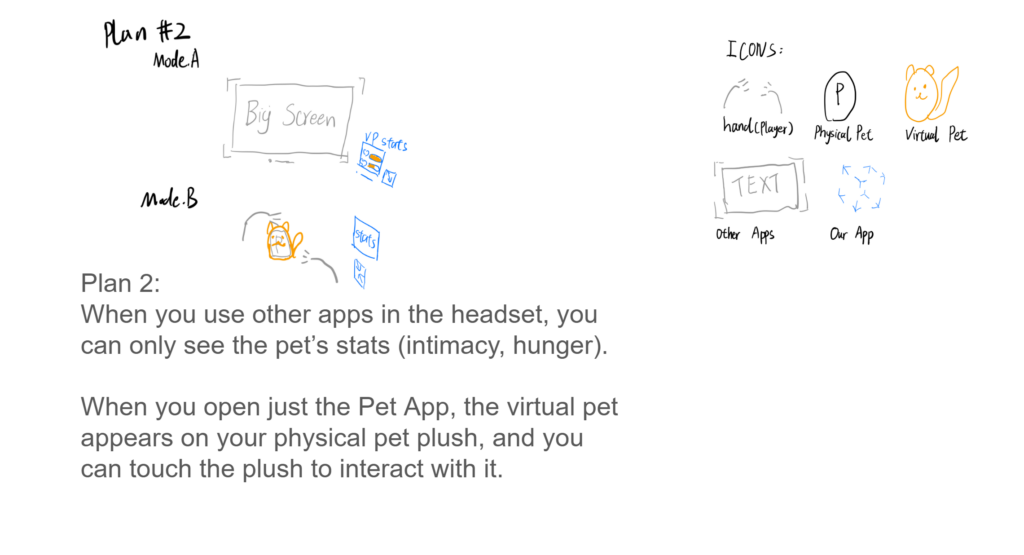
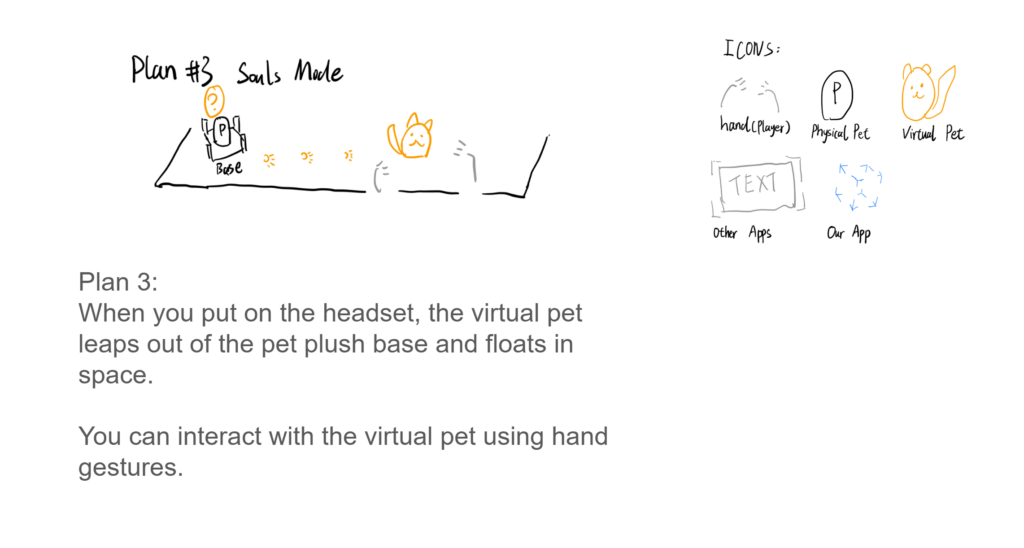
We will present these plans at 1/4s to get faculty input and feedback.

Comments are closed